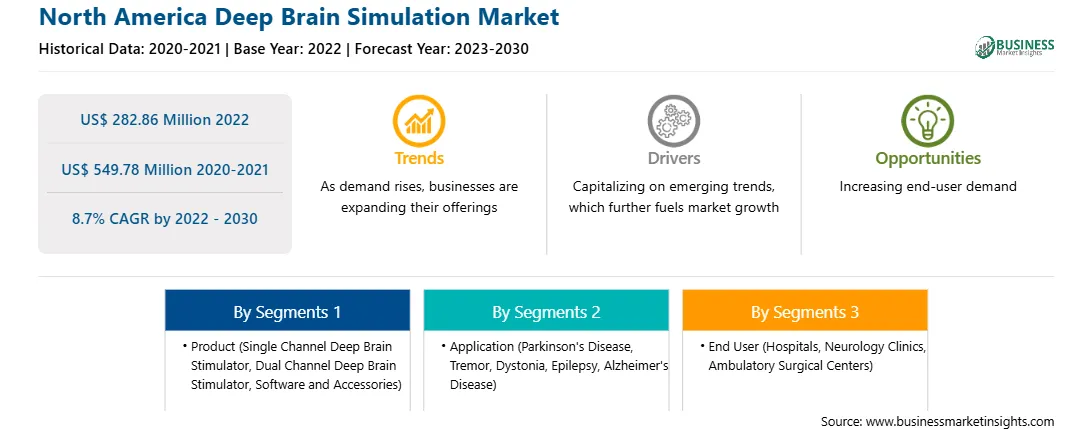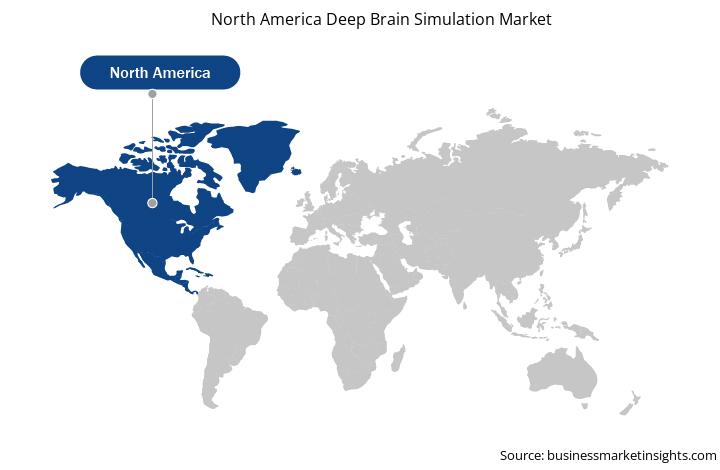The geriatric population is susceptible to neurological diseases. Neuropathy, Parkinson's disease, Alzheimer's disease, and dystonia are among the most common neurological disorders affecting older people. According to the National Institutes of Health (NIH), 8.5% of the world's population (i.e., around 617 million people) are 65 and above. Countries such as the US and Canada have high prevalence rates of movement disorders and psychiatric disorders associated with growing geriatric populations. According to the Parkinson's Foundation, Parkinson's symptoms are common at an average age of 60. The Canadian Psychological Association states that about 2% of the population suffers from obsessive-compulsive disorder (OCD). According to the World Health Organization (WHO), neurological diseases contribute 6.3% to the global disease burden and are one of the leading causes of death across the world. In addition, 13.2% of deaths in developed countries and 16.8% in low- and middle-income countries are reported due to neurological diseases. High mortality and disease burden necessitate the clinical urgency for integrating long-term solutions such as deep brain stimulators (DBS). Therefore, growing awareness regarding the burden of neurological disorders, the growing geriatric population, and the increasing prevalence of neurological diseases propel the demand for deep brain stimulators as a therapy.
The rising prevalence of neurological diseases such as Parkinson's disease (PD), increasing awareness about neurological disorders, positive research results, and growing investments in developing transcranial stimulators are among the main factors driving the overall deep brain stimulation market growth in the US. Deep brain stimulation (DBS) devices have been observed to be effective in controlling the tremors associated with Parkinson's disease. Low dopamine levels and other genetic factors are among the main causes of Parkinson's disease. According to a study titled “2022 Alzheimer's disease facts and figures” published in the Alzheimer's Association, nearly 6.5 million Americans aged 65 and above were found to have Alzheimer's disease in 2022, and that number is projected to rise to 13.8 million by 2060. Technological advancements and new product launches drive the growth of the US deep brain stimulation market. In January 2020, Abbott's Infinity DBS System received US Food and Drug Administration (FDA) approval for treating Parkinson's disease. This system allows for the targeted treatment of a specific area of the brain, called the inner globus pallidus (GPi), which is associated with the symptoms of Parkinson's disease. The US FDA approved the Verses deep brain stimulation device system for treating Parkinson's disease in December 2017 for use by Boston Scientific Corporation. According to the Parkinson's Foundation, around 1 million people in the US are suffering from Parkinson's disease, which is expected to increase to 1.2 million by 2030. Therefore, the increasing prevalence of neurological diseases and technological advancements fuel the North America deep brain simulation market growth in the US.
Strategic insights for the North America Deep Brain Simulation provides data-driven analysis of the industry landscape, including current trends, key players, and regional nuances. These insights offer actionable recommendations, enabling readers to differentiate themselves from competitors by identifying untapped segments or developing unique value propositions. Leveraging data analytics, these insights help industry players anticipate the market shifts, whether investors, manufacturers, or other stakeholders. A future-oriented perspective is essential, helping stakeholders anticipate market shifts and position themselves for long-term success in this dynamic region. Ultimately, effective strategic insights empower readers to make informed decisions that drive profitability and achieve their business objectives within the market. The geographic scope of the North America Deep Brain Simulation refers to the specific areas in which a business operates and competes. Understanding local distinctions, such as diverse consumer preferences (e.g., demand for specific plug types or battery backup durations), varying economic conditions, and regulatory environments, is crucial for tailoring strategies to specific markets. Businesses can expand their reach by identifying underserved areas or adapting their offerings to meet local demands. A clear market focus allows for more effective resource allocation, targeted marketing campaigns, and better positioning against local competitors, ultimately driving growth in those targeted areas.North America Deep Brain Simulation Strategic Insights

North America Deep Brain Simulation Report Scope
Report Attribute
Details
Market size in 2022
US$ 282.86 Million
Market Size by 2030
US$ 549.78 Million
Global CAGR (2022 - 2030)
8.7%
Historical Data
2020-2021
Forecast period
2023-2030
Segments Covered
By Product
By Application
By End User
Regions and Countries Covered
North America
Market leaders and key company profiles
North America Deep Brain Simulation Regional Insights

North America Deep Brain Simulation Market Segmentation
The North America deep brain simulation market is segmented into product, application, end user, and country.
Based on product, the North America deep brain simulation market is segmented into single channel deep brain stimulator, dual channel deep brain stimulator, and software and accessories. In 2022, the dual channel deep brain stimulator segment registered the largest share in the North America deep brain simulation market.
Based on application, the North America deep brain simulation market is segmented into Parkinson’s disease, tremor, dystonia, epilepsy, Alzheimer’s disease, and others. In 2022, the Parkinson’s disease segment registered the largest share in the North America deep brain simulation market.
Based on end user, the North America deep brain simulation market is segmented into hospitals, neurology clinics, ambulatory surgical centers, and others. In 2022, the hospitals segment registered the largest share in the North America deep brain simulation market.
Based on country, the North America deep brain simulation market is segmented into the US, Canada, Mexico. In 2022, the US registered the largest share in the North America deep brain simulation market.
Abbott Laboratories, Boston Scientific Corp, Medtronic Plc, and Newronika SpA are some of the leading companies operating in the North America deep brain simulation market.
The North America Deep Brain Simulation Market is valued at US$ 282.86 Million in 2022, it is projected to reach US$ 549.78 Million by 2030.
As per our report North America Deep Brain Simulation Market, the market size is valued at US$ 282.86 Million in 2022, projecting it to reach US$ 549.78 Million by 2030. This translates to a CAGR of approximately 8.7% during the forecast period.
The North America Deep Brain Simulation Market report typically cover these key segments-
The historic period, base year, and forecast period can vary slightly depending on the specific market research report. However, for the North America Deep Brain Simulation Market report:
The North America Deep Brain Simulation Market is populated by several key players, each contributing to its growth and innovation. Some of the major players include:
The North America Deep Brain Simulation Market report is valuable for diverse stakeholders, including:
Essentially, anyone involved in or considering involvement in the North America Deep Brain Simulation Market value chain can benefit from the information contained in a comprehensive market report.